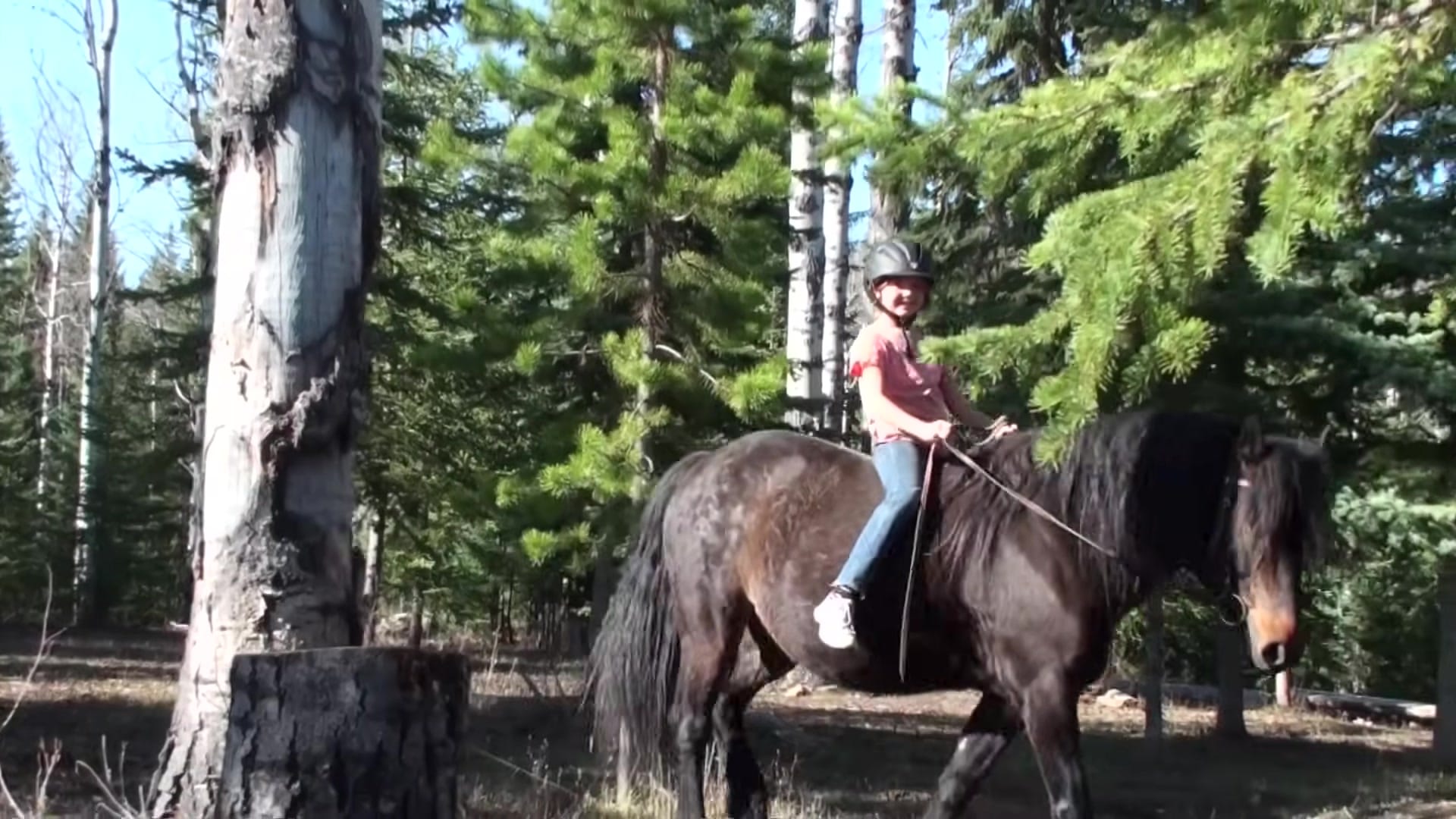A Family Built Off-Grid on 40 Acres — Home Cost Under $25K
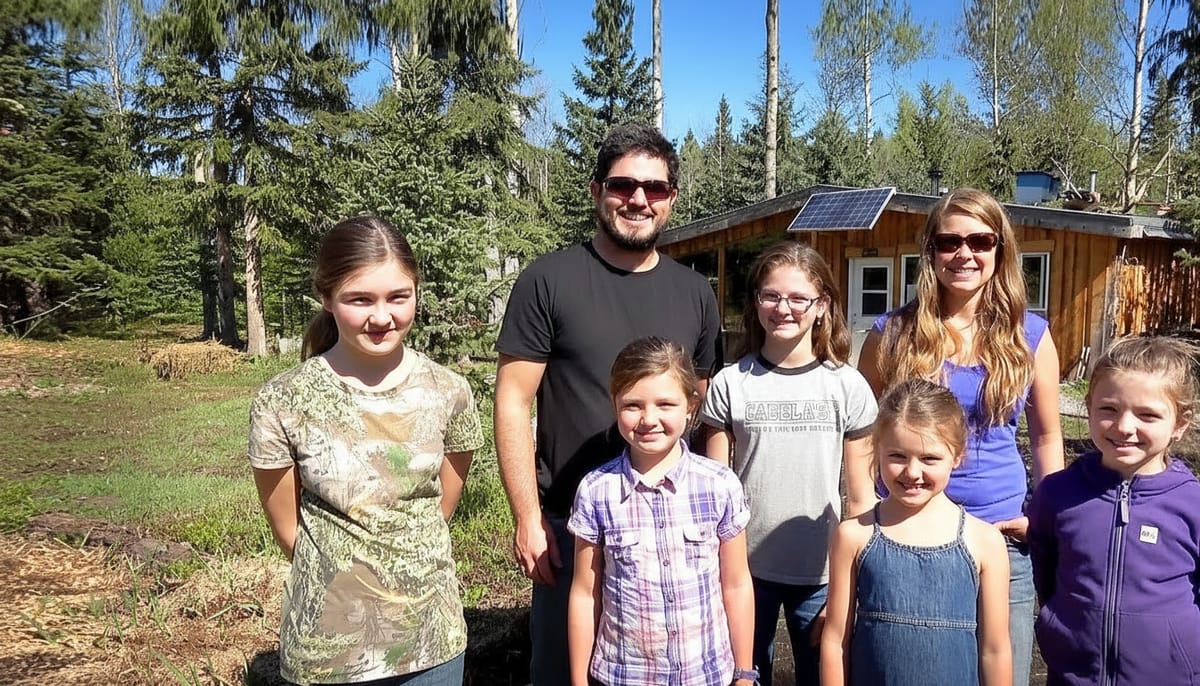
A plan called "Freedom 35" started the whole thing, a choice to need less money and more time.
Why they chose gridlessness — land, goals, and lifestyle
They wanted debt-free ownership and a life surrounded by forests, rivers, and mountains.
The purchase was a forested 40-acre parcel in northern British Columbia that became the anchor for everything else.
The land supplies nearly all of their electricity, heat, water, and much of their food.
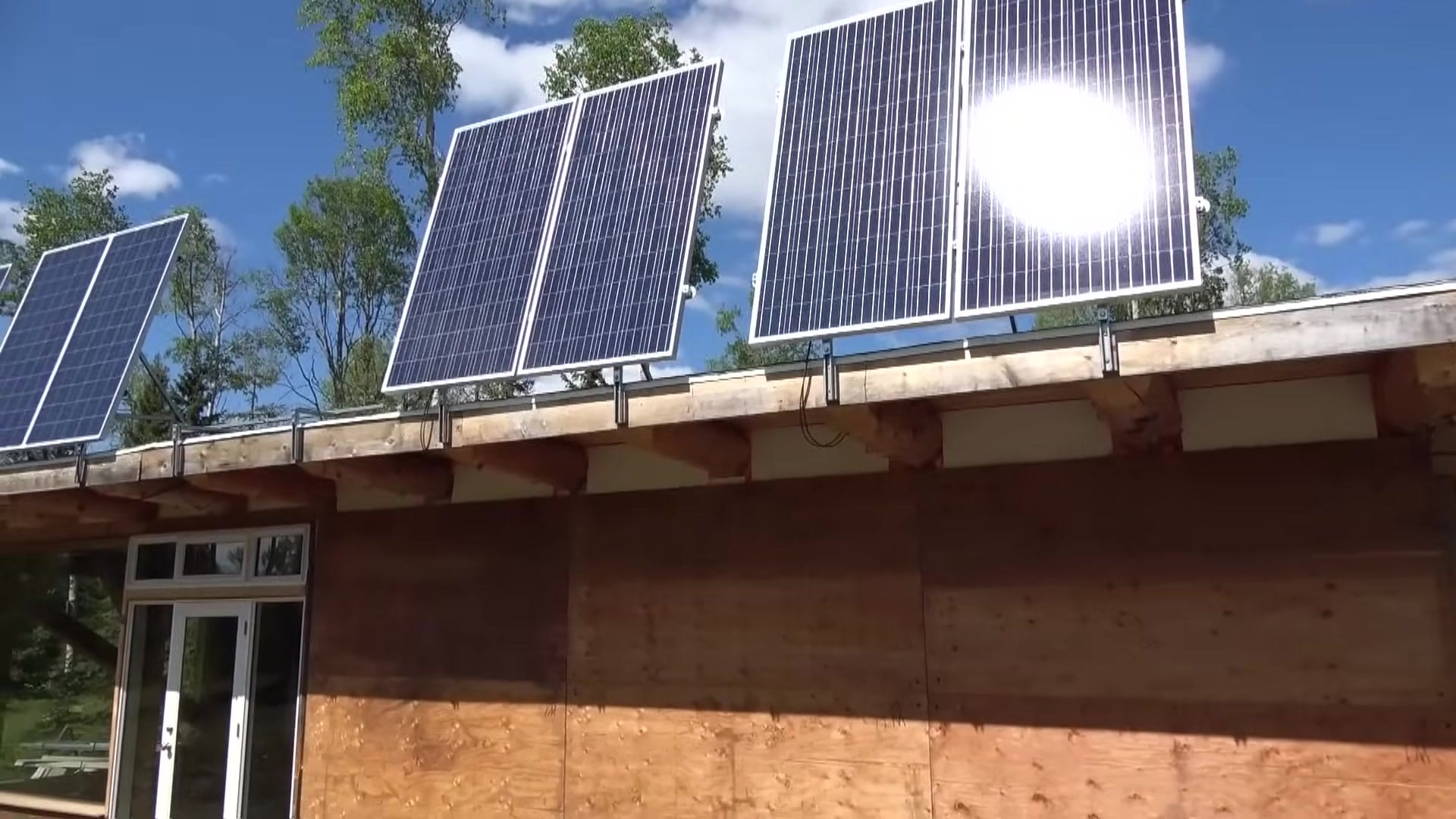
Gardening here is clever and low-effort; straw-bale beds cut weeding and maintenance dramatically.
Straw-bale gardening and planting carrots made food production feel doable from day one.
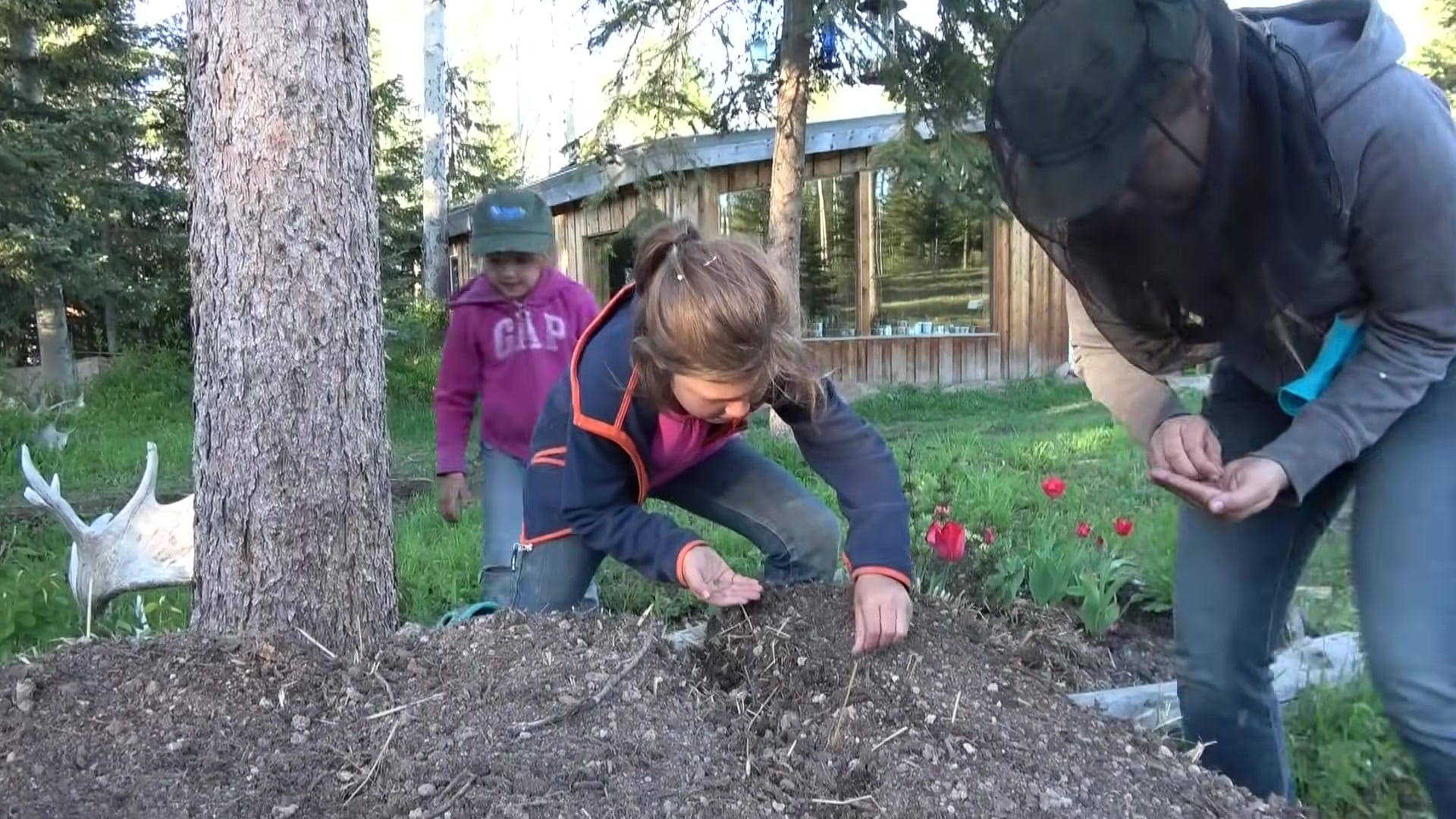
How the house was built — cheap, simple, and weather-ready
Keeping the house small and debt-free drove every decision.
The footprint is compact, deliberately simple, and shaped around local materials and easy maintenance.
Cedar posts were sunk directly into the ground like a pole barn so no concrete foundation was needed.
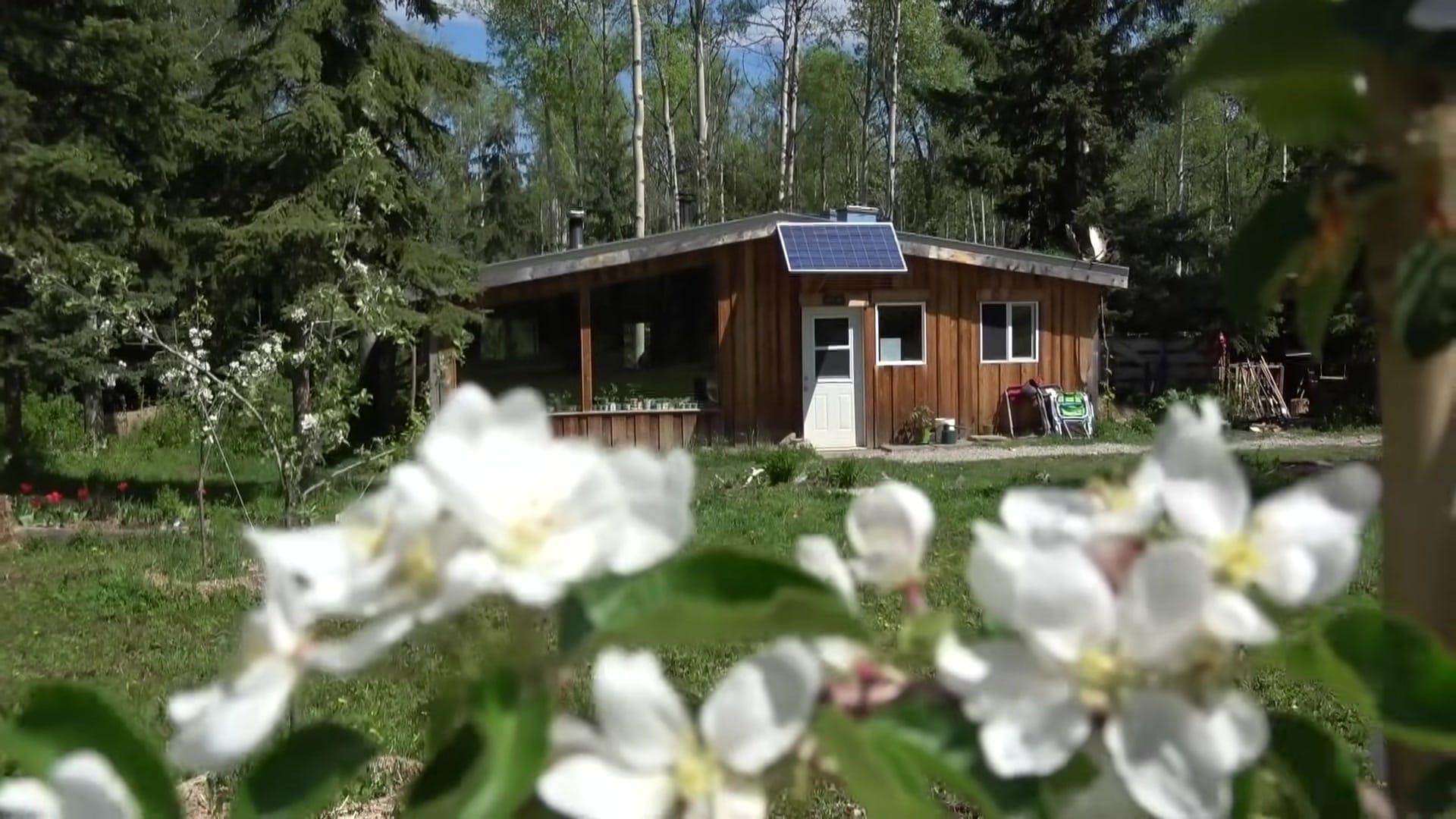
That choice meant no expensive excavation, just timber set in place and a fast build process.
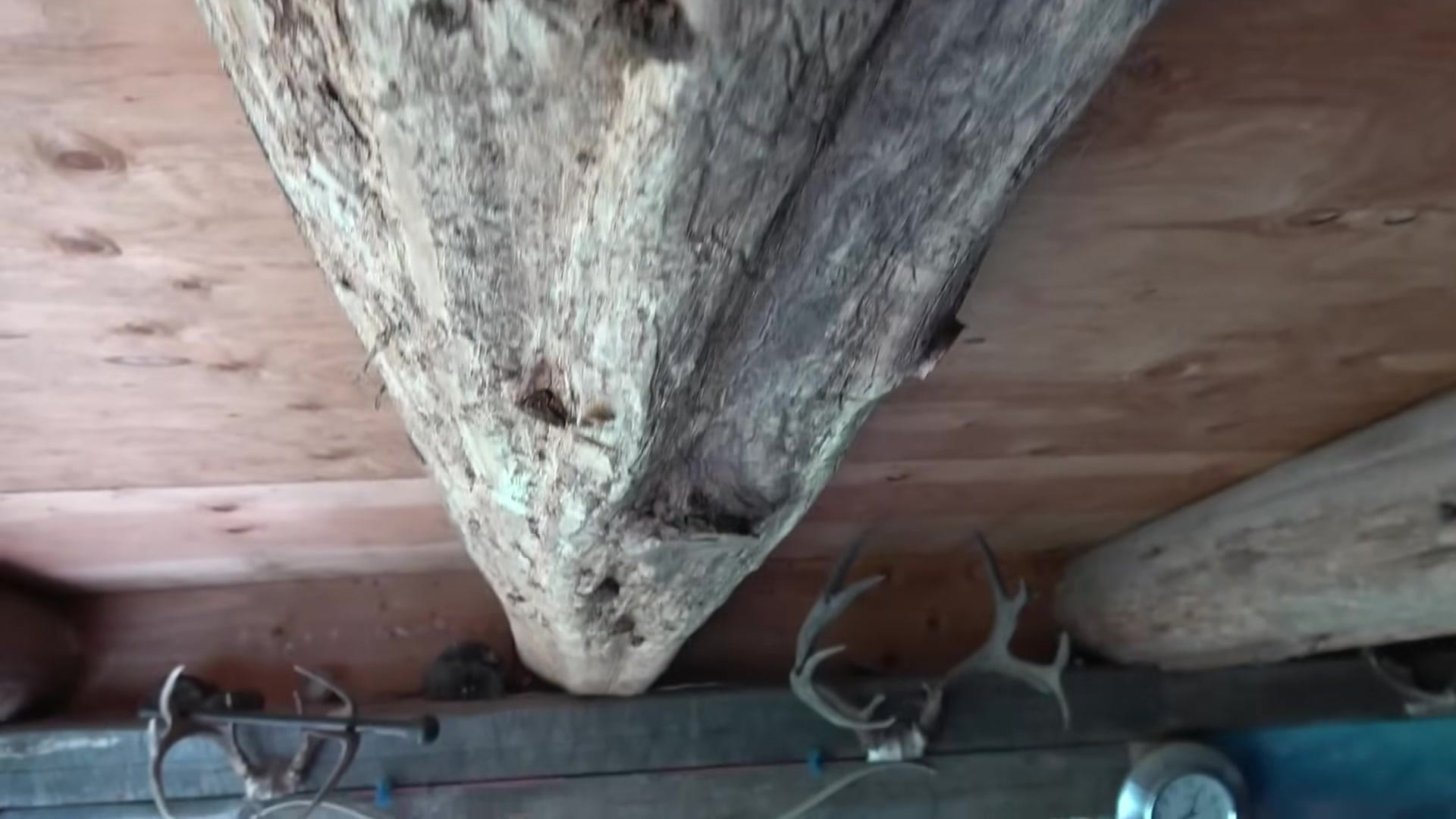
They cut their own log rafters and wrapped the frame with plywood and foam insulation for winter performance.
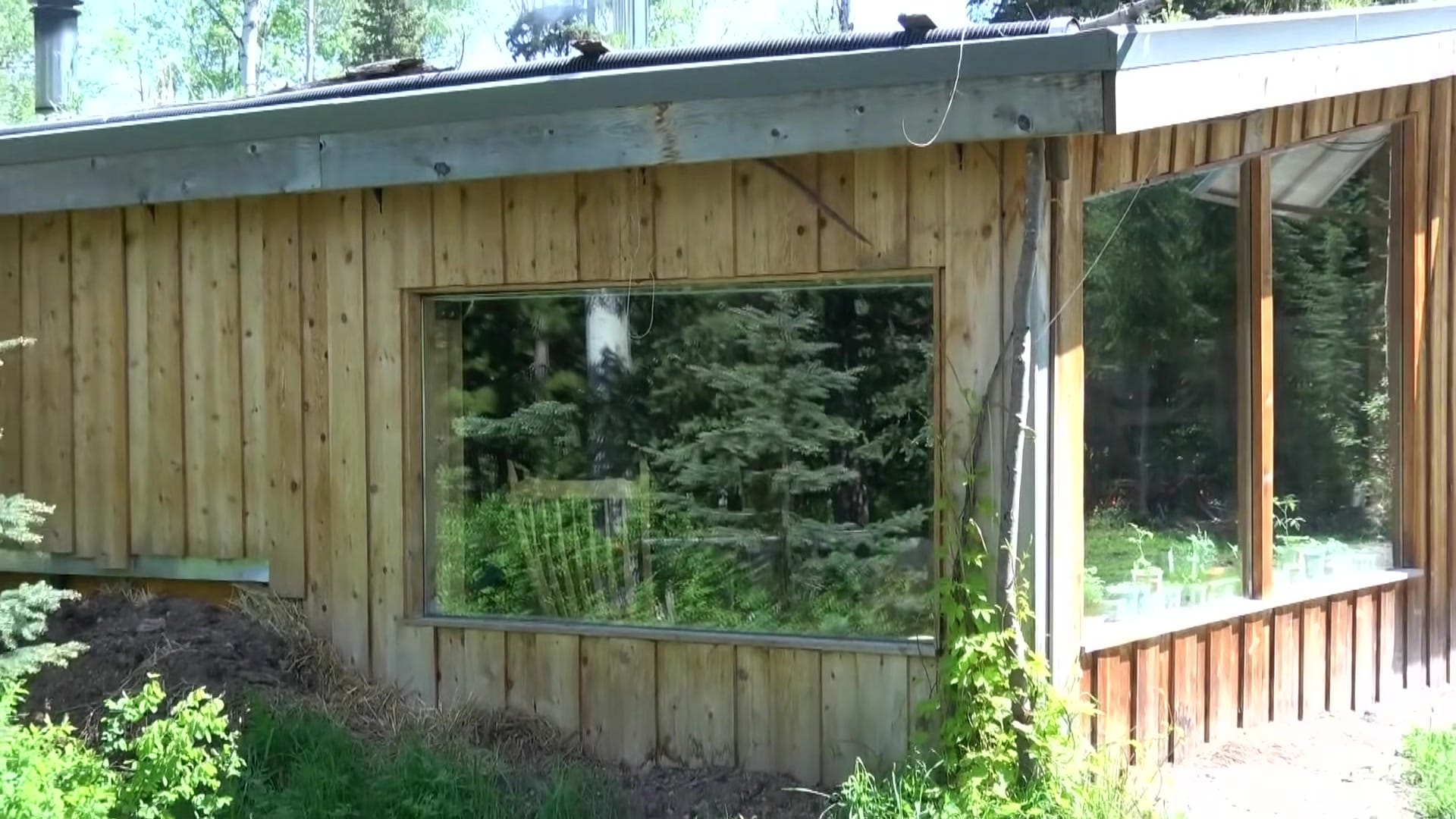
The outside uses board-and-batten siding and a living roof, and the whole build came in under the $25K mark.
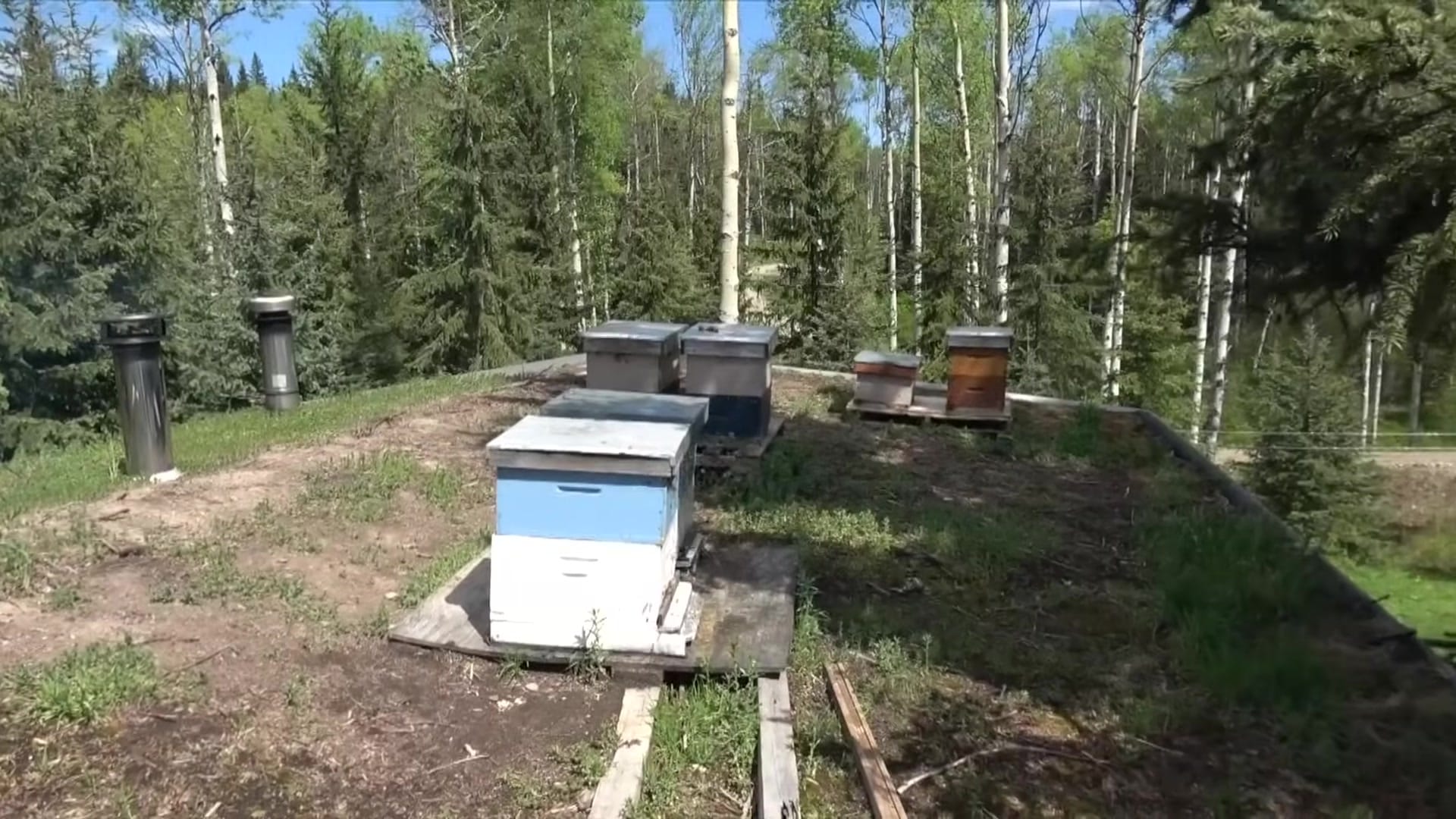
Water, waste, and bathing — rain tanks, filters, greywater, toilets
Running water and sewer lines were intentionally avoided to save money and complexity.
Buckets, gravity, and simple plumbing decisions keep things reliable and serviceable.
Rainwater is collected from the shop roof as the main source and the system started very small.
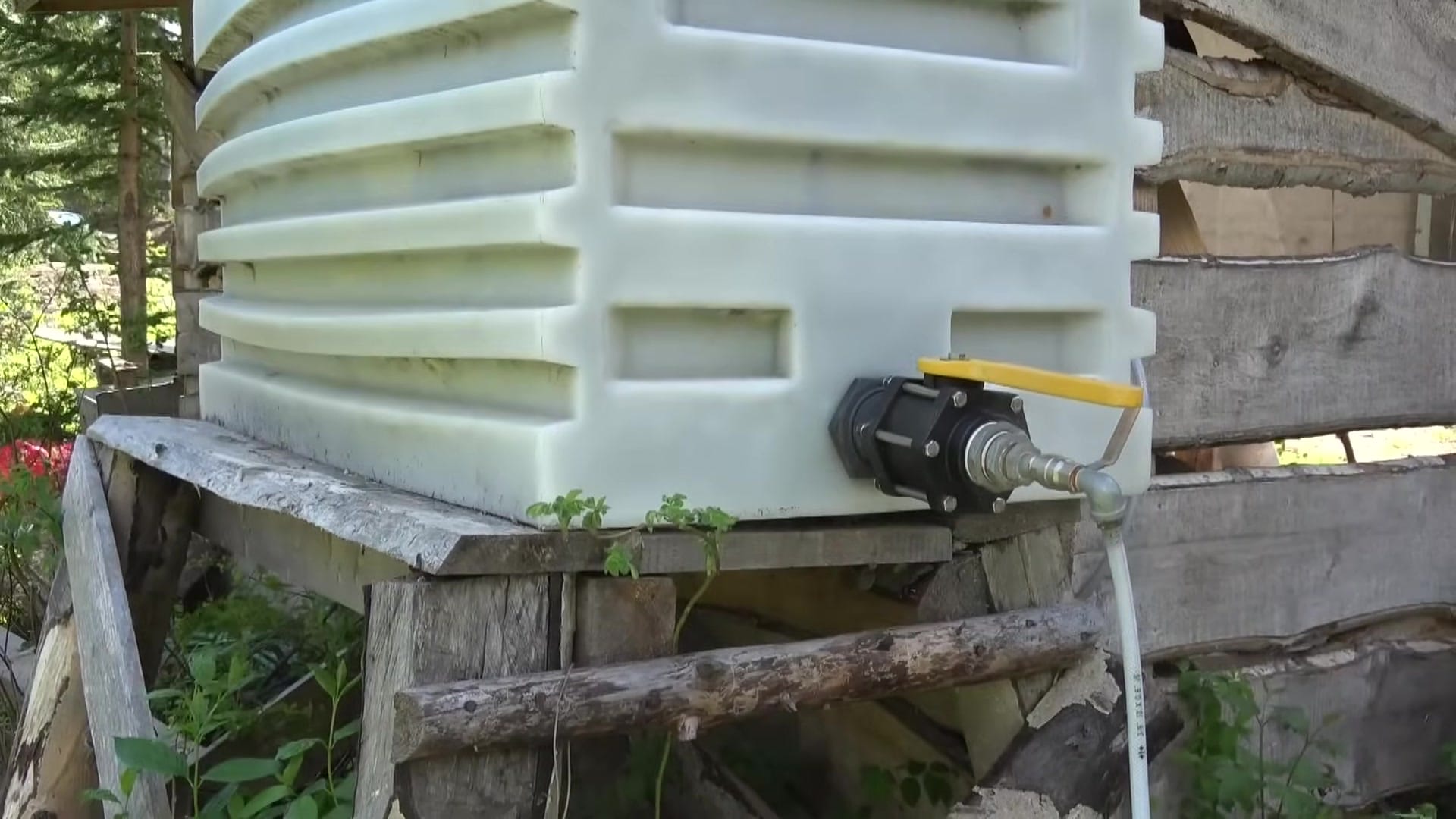
A 900-gallon tank under the shop floor stores water in a cool spot to preserve quality.
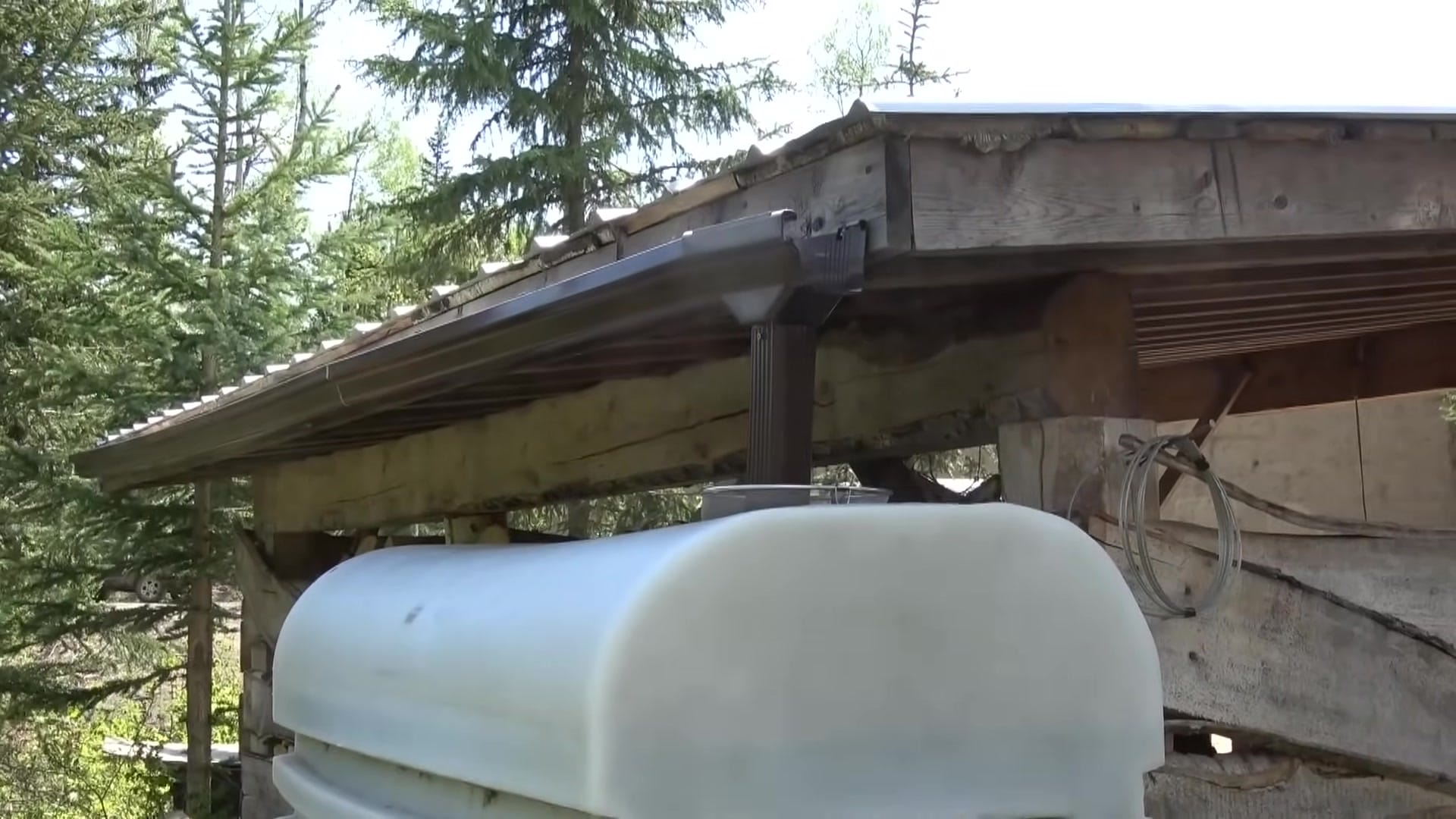
That rainwater setup cost about $1,000 compared with roughly $20,000 for drilling a well, so the savings are huge.
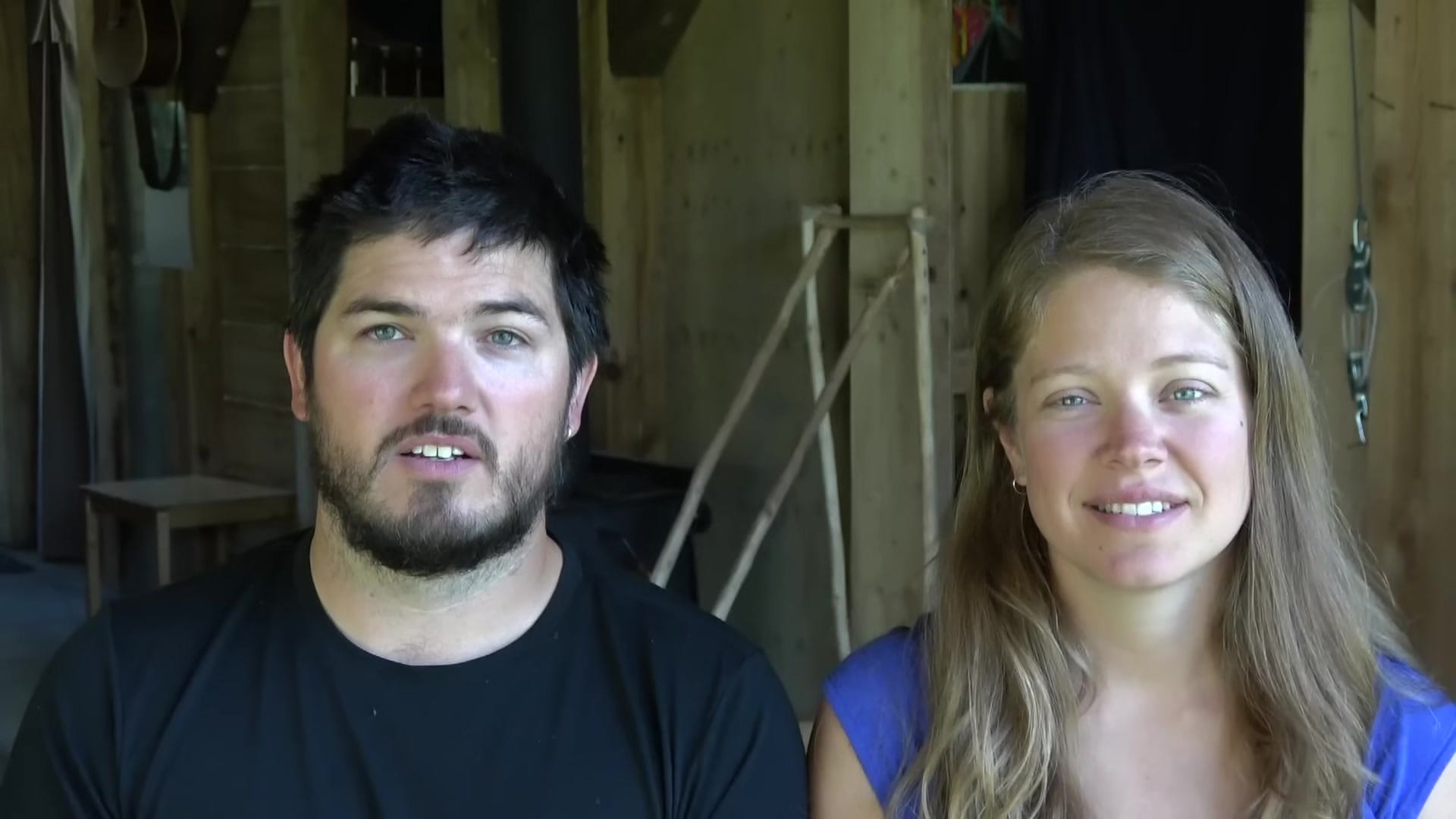
The kitchen sink and shower empty into a shallow greywater drainage field behind the house to keep waste handling local and low-tech.
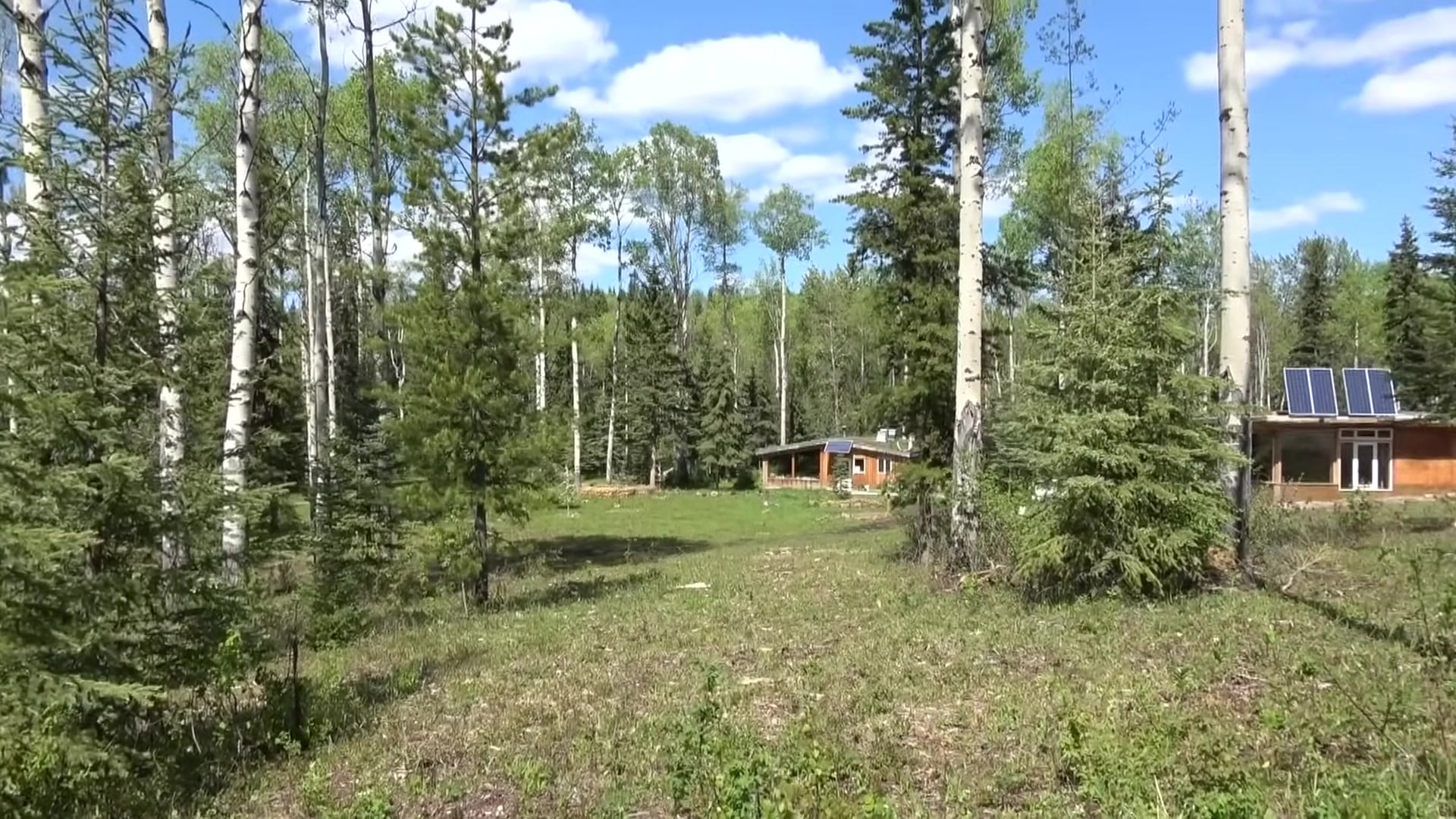
Power systems — from one 12V panel to a 2.5 kW shop array
Electricity began as a tiny, intentional system sized for basics.
From there they added capacity in stages to match real needs without overspending.
The first step was a single solar panel feeding a simple 12‑volt RV-style system for LED lights and phones.
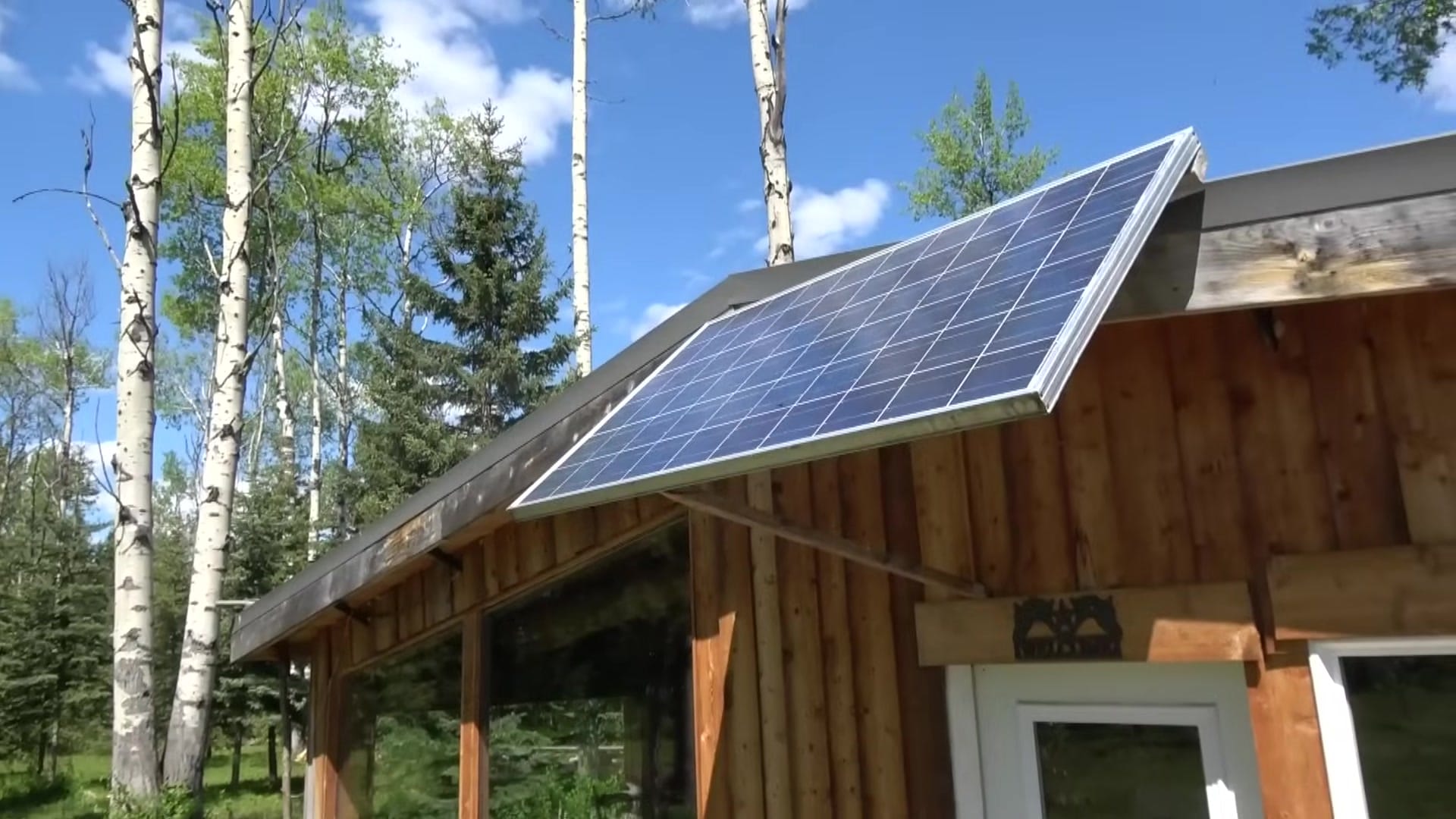
That 12V setup runs lighting, chargers, and a music player so the house is functional even on minimal panels.
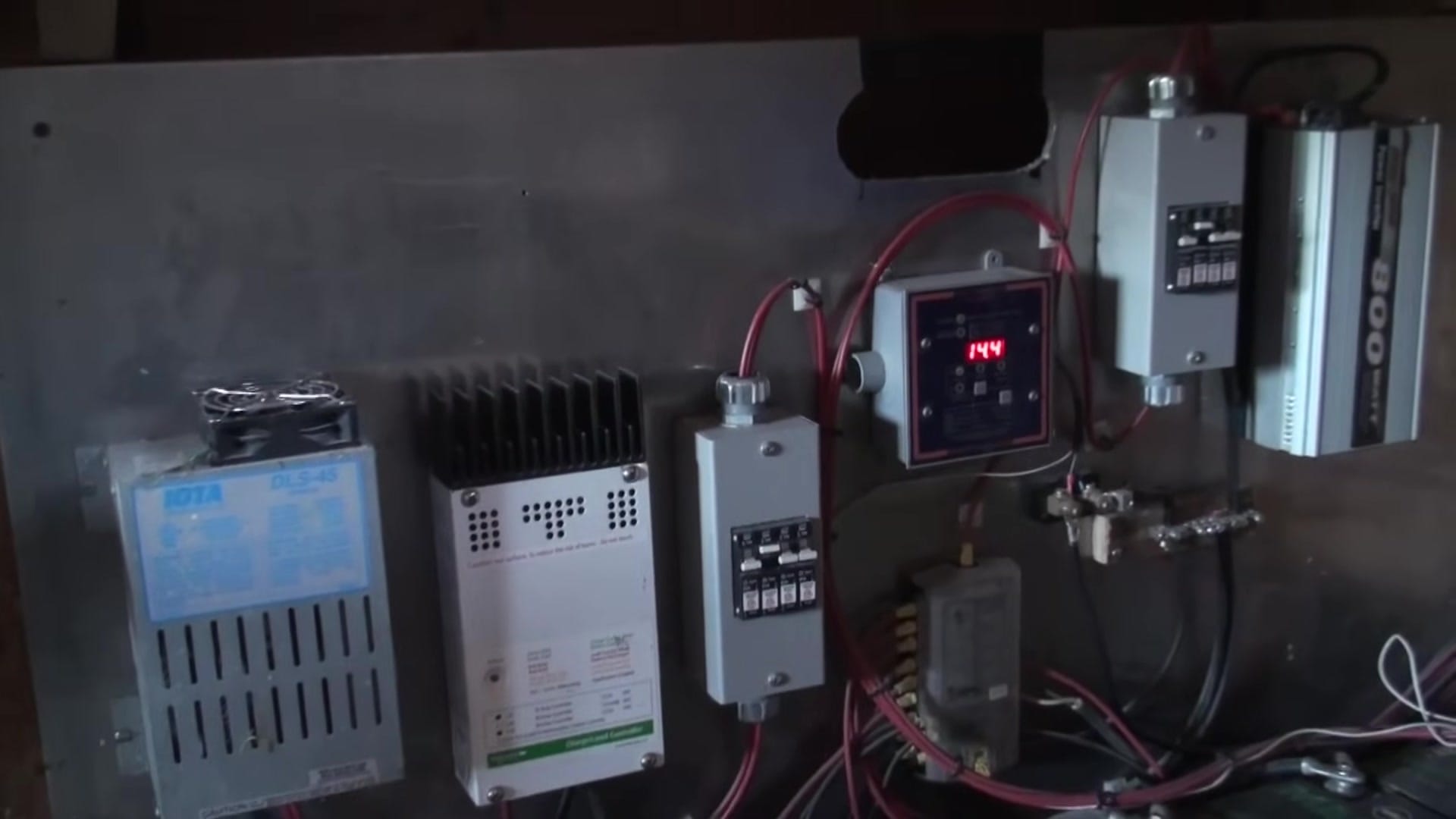
A later investment was a 2.5 kW array on the shop roof that lets them run a full fridge, deep freeze, and washing machine.
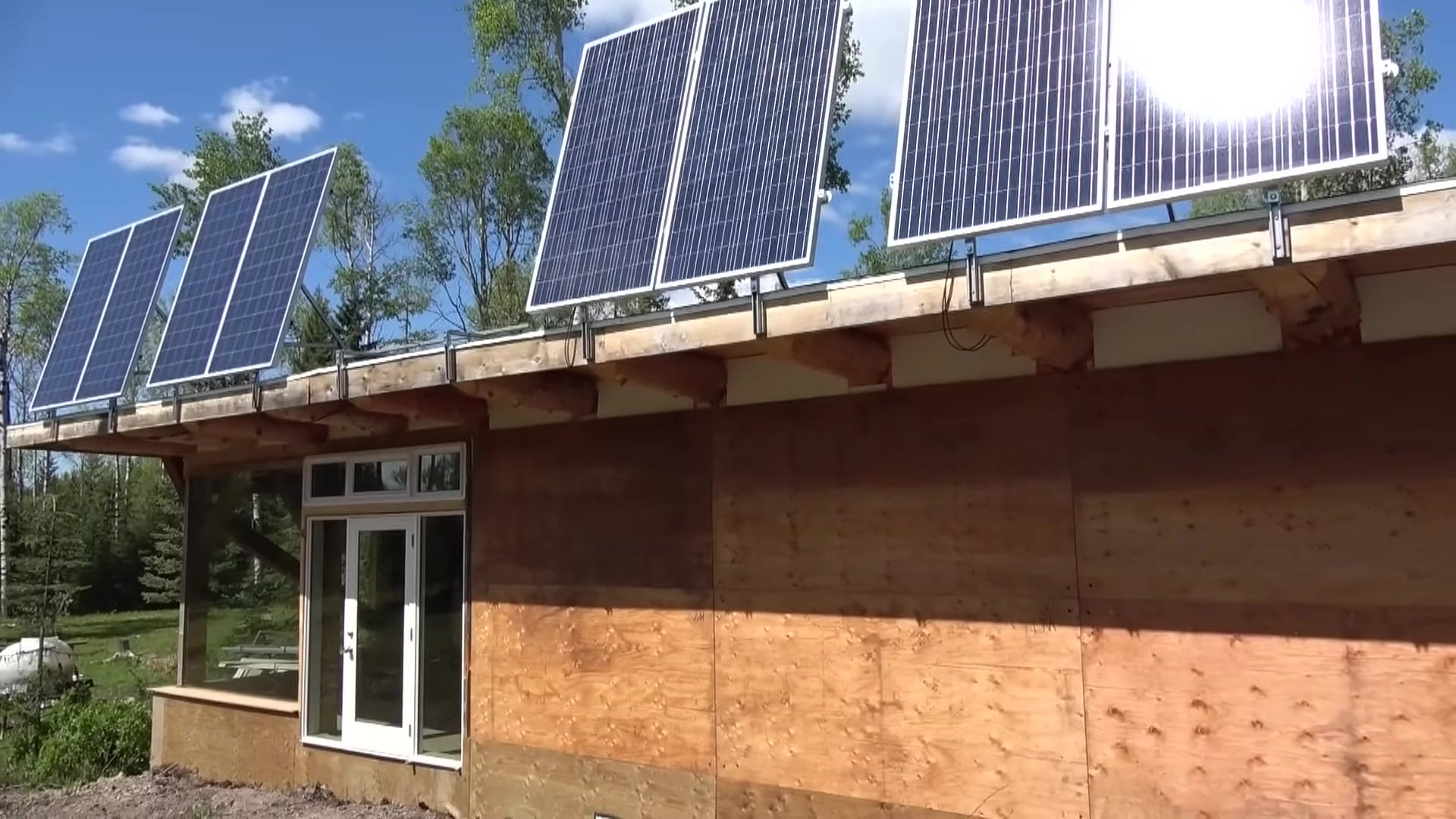
A backup generator lives in the mix but runs under 40 hours a year, only during long cloudy winter stretches.
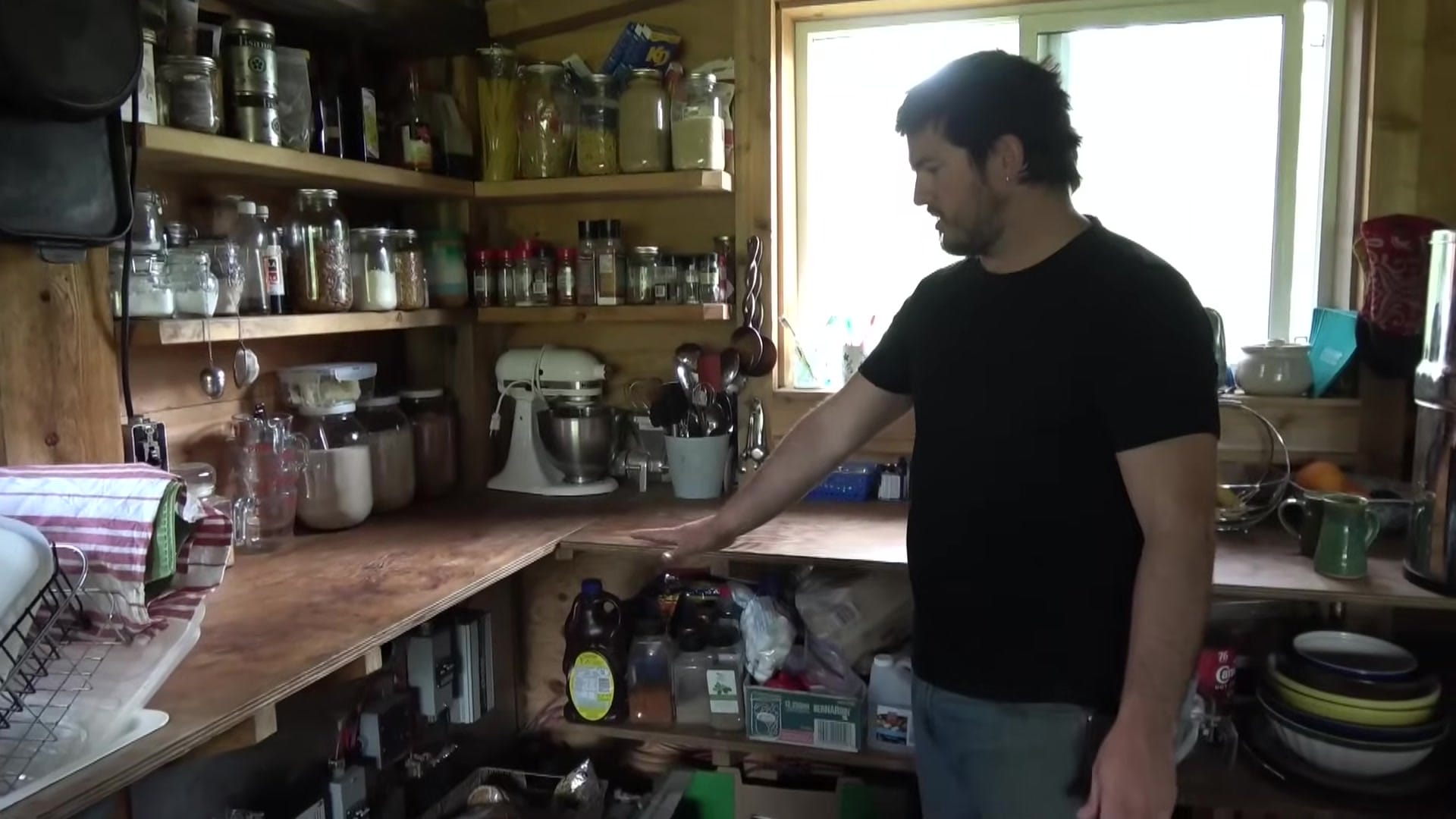
Cooking, heating, and day-to-day chores
Heat and daily warmth are centered around efficient wood-fired solutions.
Kitchen and living spaces are multi-use and organized to do more with less.
A Blaze King catalytic wood stove sits in the center of the house as the main heat source and heats water for chores.
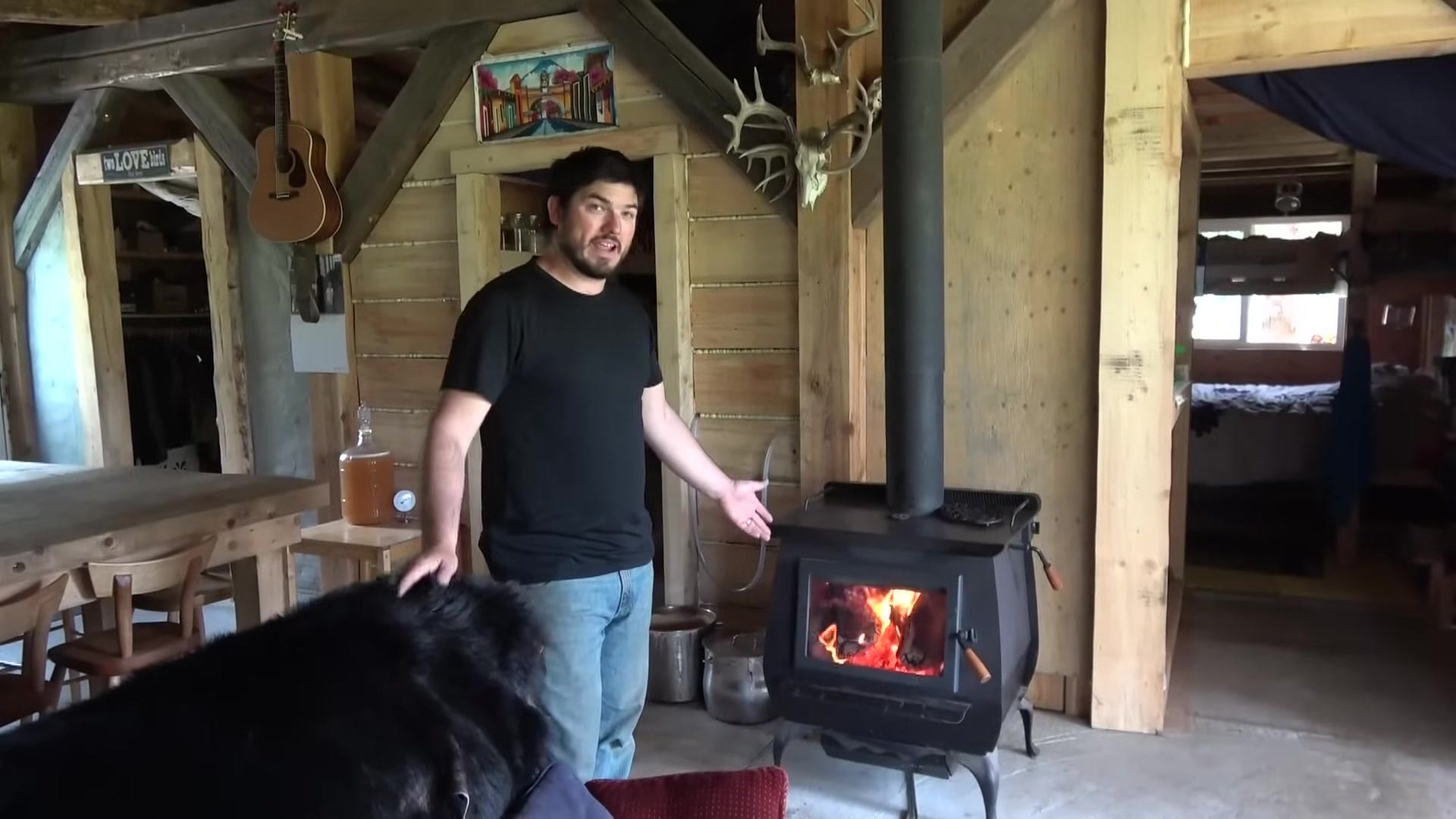
Kettles and pots on the stove provide hot water for dishes and showers when needed.
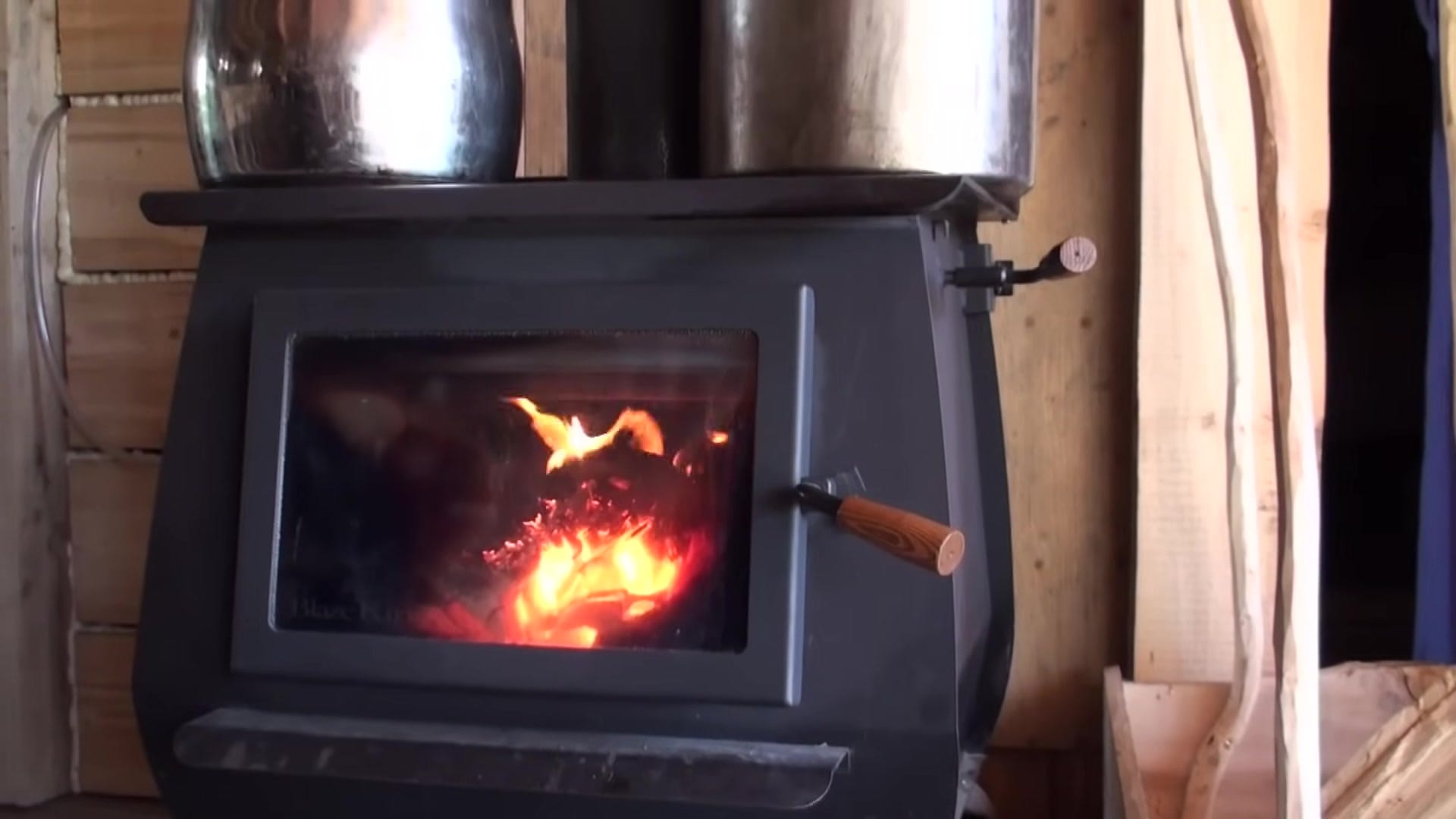
An antique cook stove handles baking and slow-cooking, and it warms up quickly enough for oven use.
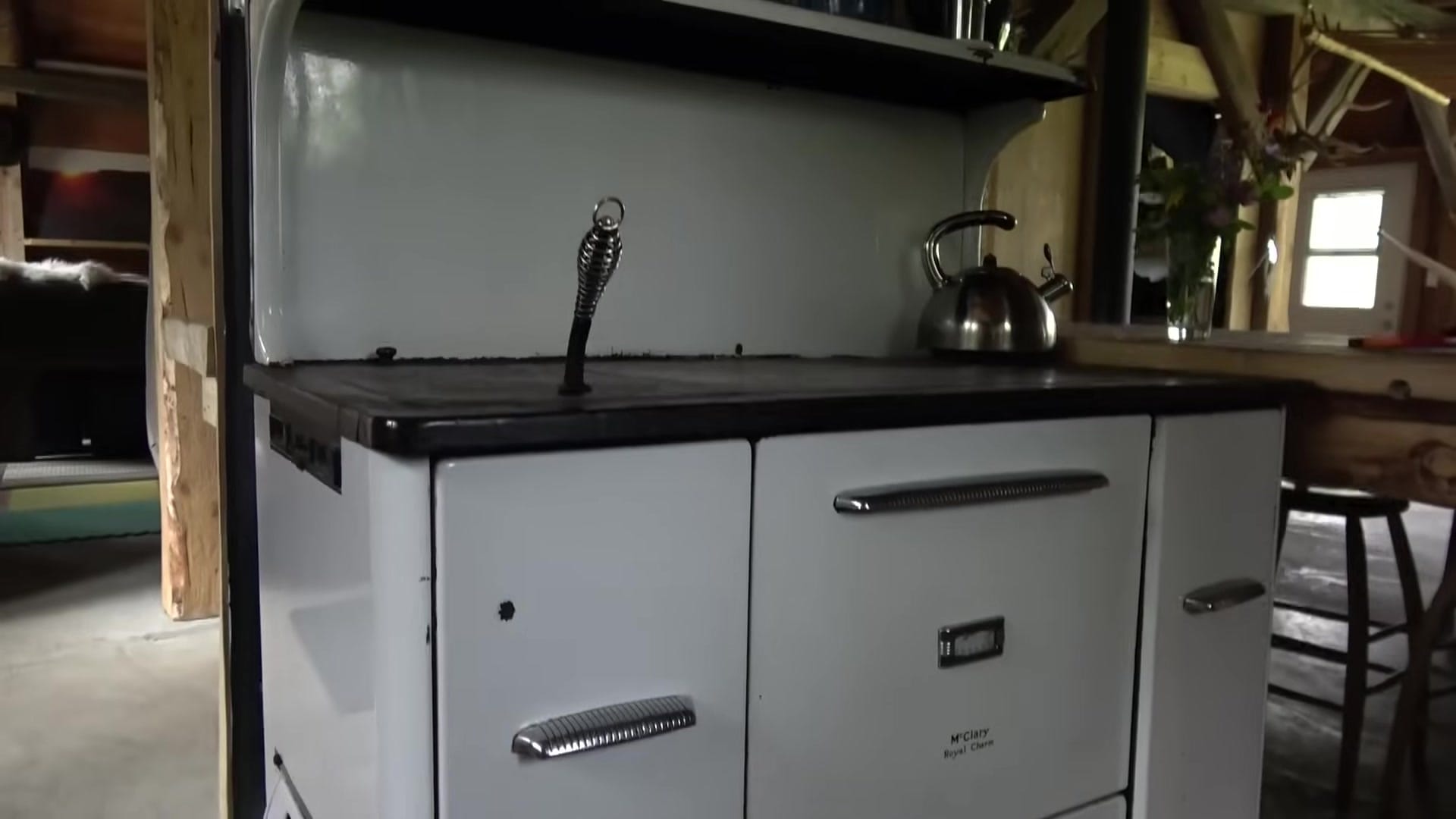
The kitchen is compact for feeding seven people, but a good mixer and occasional small appliances make meal prep manageable.
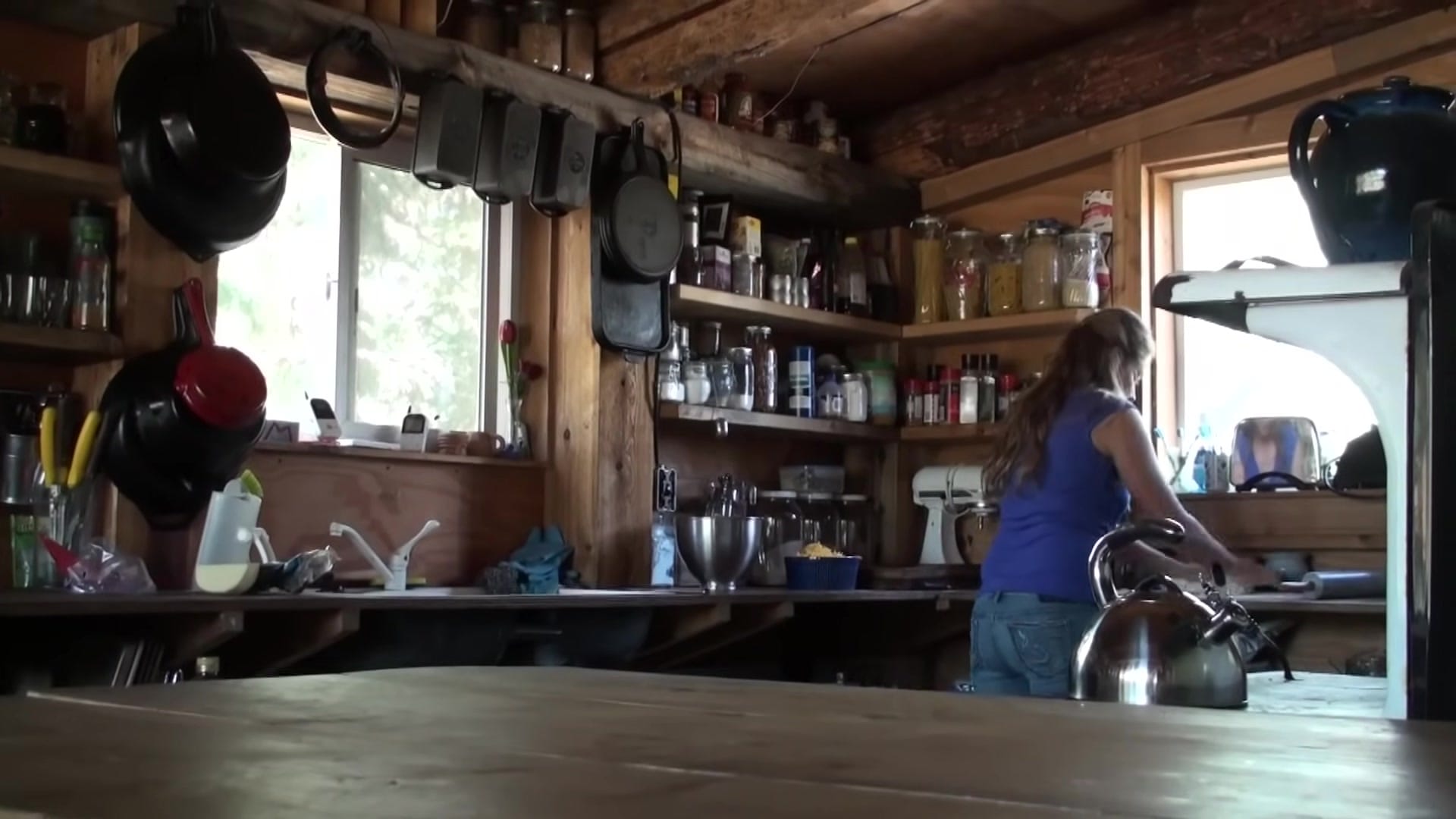
Costs, challenges, homeschooling, and what they’d never trade
Cost-conscious choices defined almost every system from the start.
Practical tradeoffs—no well, no septic, compact footprint—kept the price down without sacrificing the essentials.
The whole house build stayed under $25,000, a number that rewrote the budget for this lifestyle.
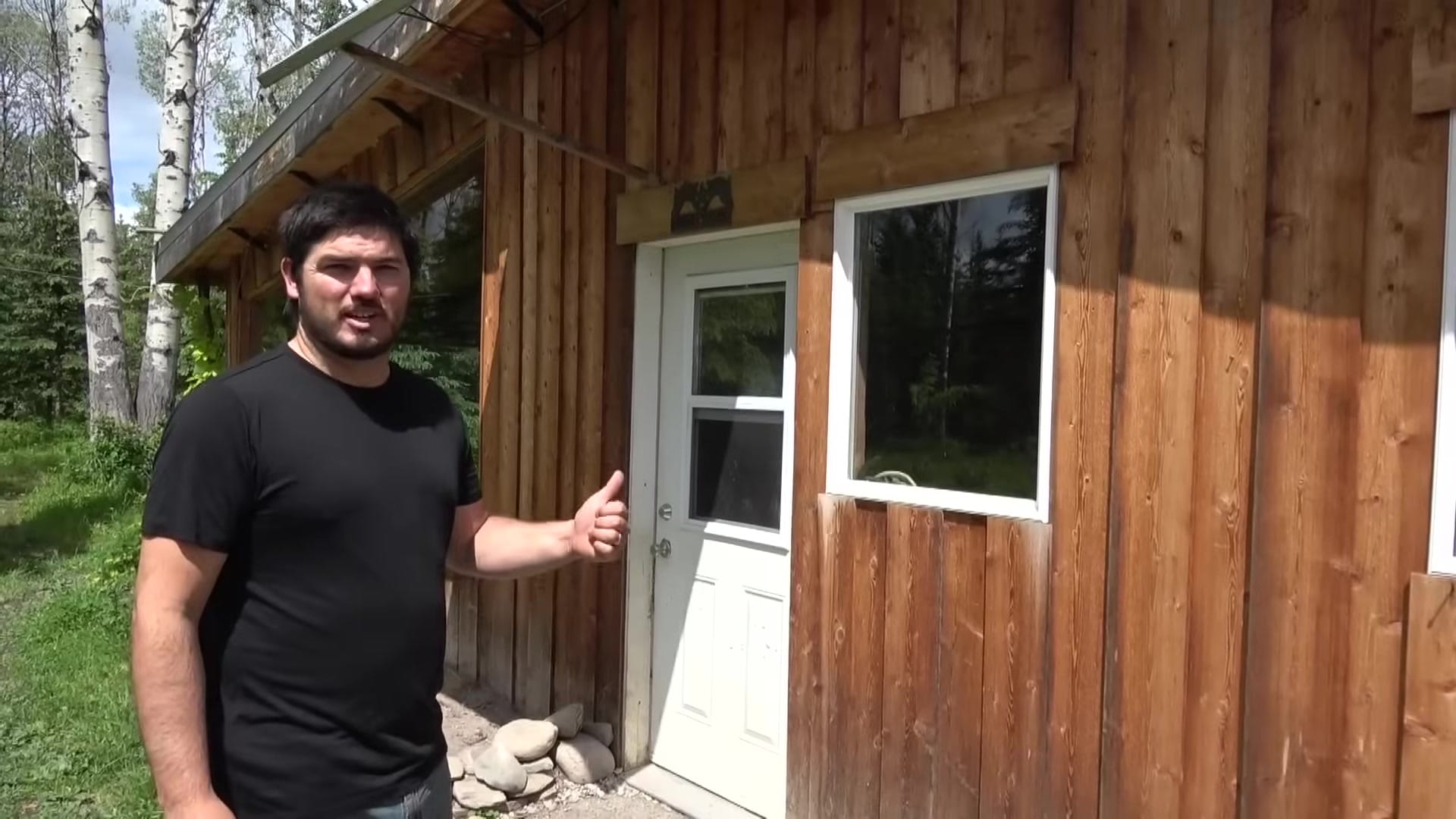
Everyday chores include carrying water, emptying compost buckets, and collecting firewood, and the toughest ongoing task is keeping the access road clear in winter.
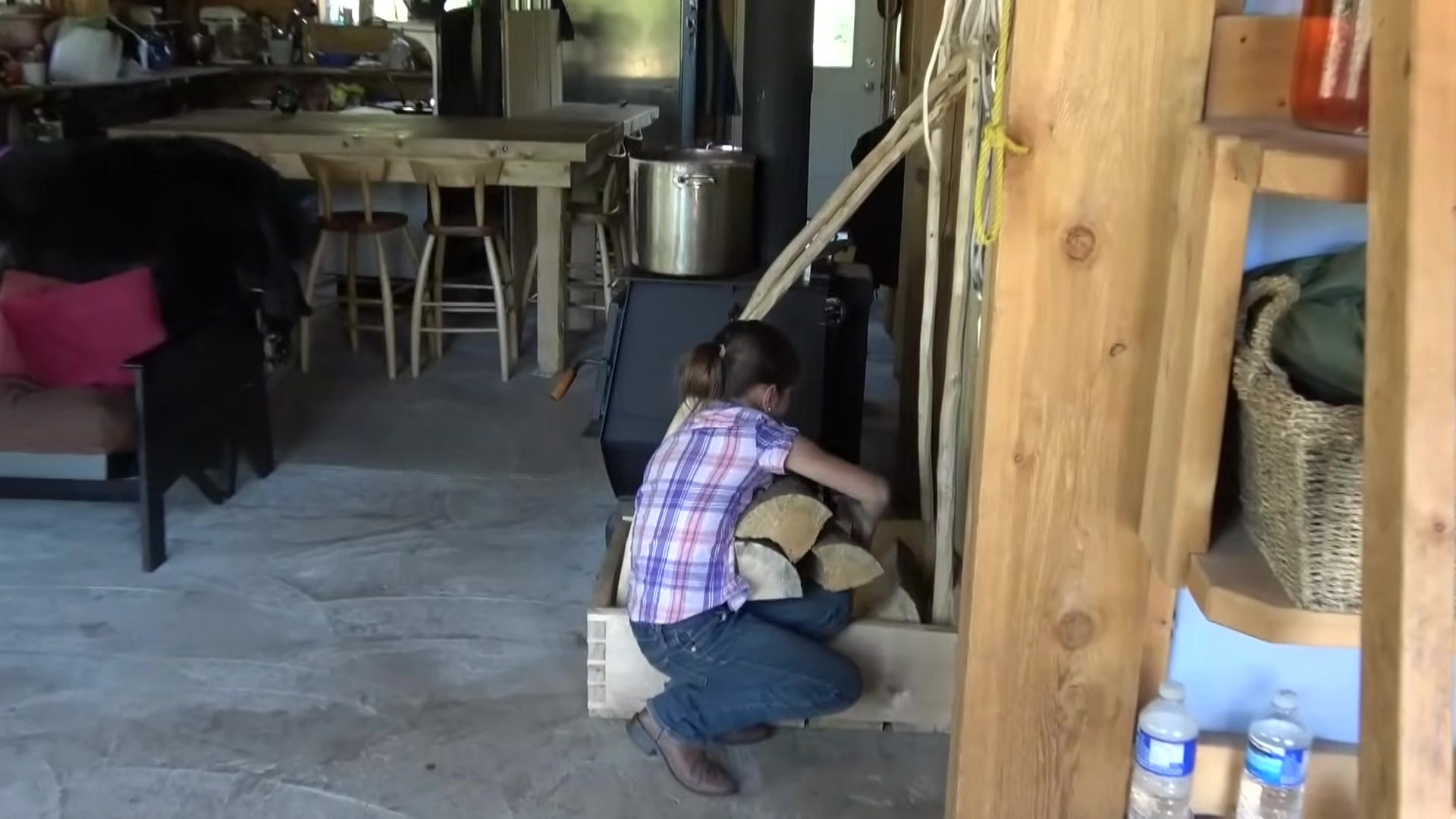
Schooling takes about two to three hours a day for the kids, leaving time for real-world skills alongside academics.
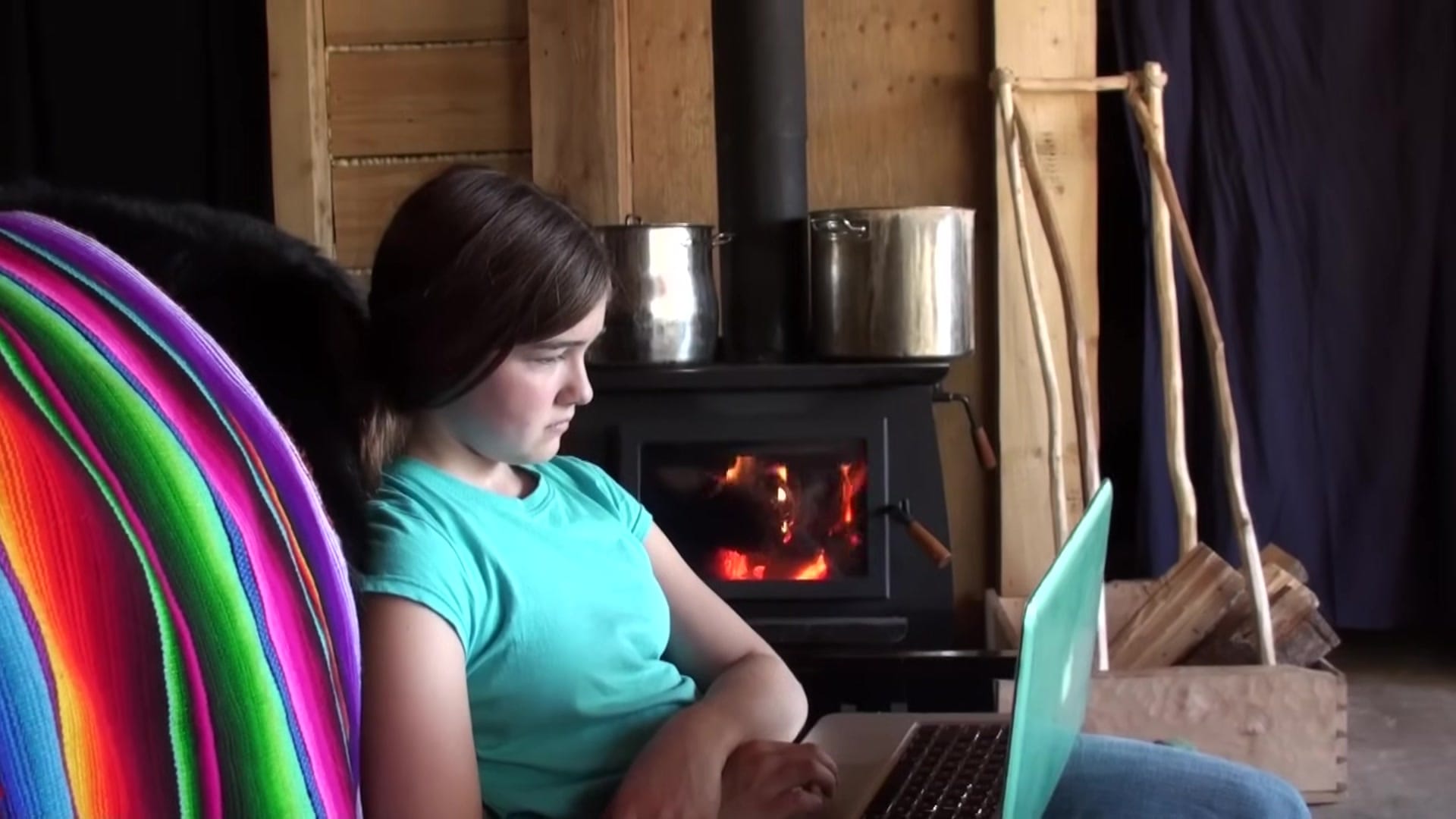
Between horseback rides, beekeeping, and river swims, the family says life here is full and they wouldn’t trade the freedom it bought them.
